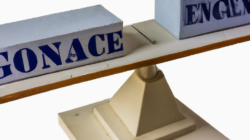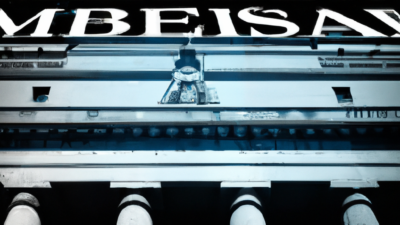**Article Title: Can Monetary Policy Reduce Cost-Push Inflation?**
In the intricate realm of economics, inflation remains a perennial challenge that policymakers and central banks strive to control. While demand-pull inflation, driven by an increase in consumer demand, has been extensively analyzed and managed through various monetary tools, cost-push inflation presents a more complex puzzle. This form of inflation occurs when the costs of production for goods and services increase, leading to higher prices for consumers. Factors such as rising wages, increased raw material costs, and supply chain disruptions can precipitate this type of inflation, posing significant hurdles for economic stability.
As economies worldwide grapple with the repercussions of recent global events, including supply chain disruptions and energy market volatility, the question arises: Can monetary policy effectively combat cost-push inflation? Traditionally, monetary policy has been utilized to temper demand-pull inflation through interest rate adjustments, open market operations, and other financial mechanisms. However, the efficacy of these tools in addressing cost-push inflation remains a topic of debate among economists and policymakers.
This article delves into the nuances of cost-push inflation and explores whether conventional and unconventional monetary policy measures can mitigate its impact. By examining historical instances, current economic conditions, and theoretical perspectives, we aim to shed light on the potential and limitations of monetary policy in reducing cost-push inflation. Join us as we navigate this complex economic landscape, seeking to understand the interplay between monetary decisions and inflationary pressures stemming from the supply side of the economy.
Certainly! Below is a suggested content outline for an article that discusses whether monetary policy can reduce cost-push inflation:
Cost-push inflation arises when the costs of production for goods and services increase, leading to a decrease in aggregate supply. This type of inflation is typically driven by factors such as rising wages, increased prices for raw materials, supply chain disruptions, and higher taxes or regulations. Addressing cost-push inflation through monetary policy presents a unique set of challenges, as traditional tools are primarily designed to manage demand-side inflation.
Monetary policy, typically enacted by central banks, involves managing interest rates and controlling the money supply to influence economic activity. To combat inflation, central banks may increase interest rates, making borrowing more expensive and thereby reducing consumer spending and business investment. While this can be effective for demand-pull inflation, where excessive demand drives up prices, its efficacy in addressing cost-push inflation is more complex.
Raising interest rates to curb cost-push inflation can have a cooling effect on the economy by reducing overall demand. This might help to mitigate inflationary pressures indirectly, as lower demand can lead to lower prices. However, this approach does not address the root cause of cost-push inflation, which is the increased production costs. Moreover, higher interest rates can exacerbate economic slowdowns, leading to reduced business investment and potentially higher unemployment, without resolving the underlying supply-side constraints.
In some cases, central banks may opt for a more nuanced approach by adopting a flexible inflation targeting regime. This allows them to tolerate a temporary rise in inflation if it is driven by supply-side factors, under the assumption that these pressures will eventually subside. This strategy aims to avoid the potentially severe economic consequences of aggressive monetary tightening.
Additionally, central banks can use forward guidance to manage expectations about future inflation and interest rate movements. By clearly communicating their commitment to price stability, they can influence inflation expectations, which play a crucial role in actual inflation dynamics. If businesses and consumers believe that inflation will remain under control, they are less likely to adjust prices and wages preemptively, which can help moderate inflation.
In summary, while monetary policy can influence cost-push inflation to some extent, its direct impact is limited because it does not address the root causes of increased production costs. A more effective approach might involve a combination of monetary policy and supply-side measures, such as improving supply chain efficiency, reducing regulatory burdens, and fostering technological innovation to enhance productivity. This holistic strategy can help alleviate cost pressures while supporting sustainable economic growth.













